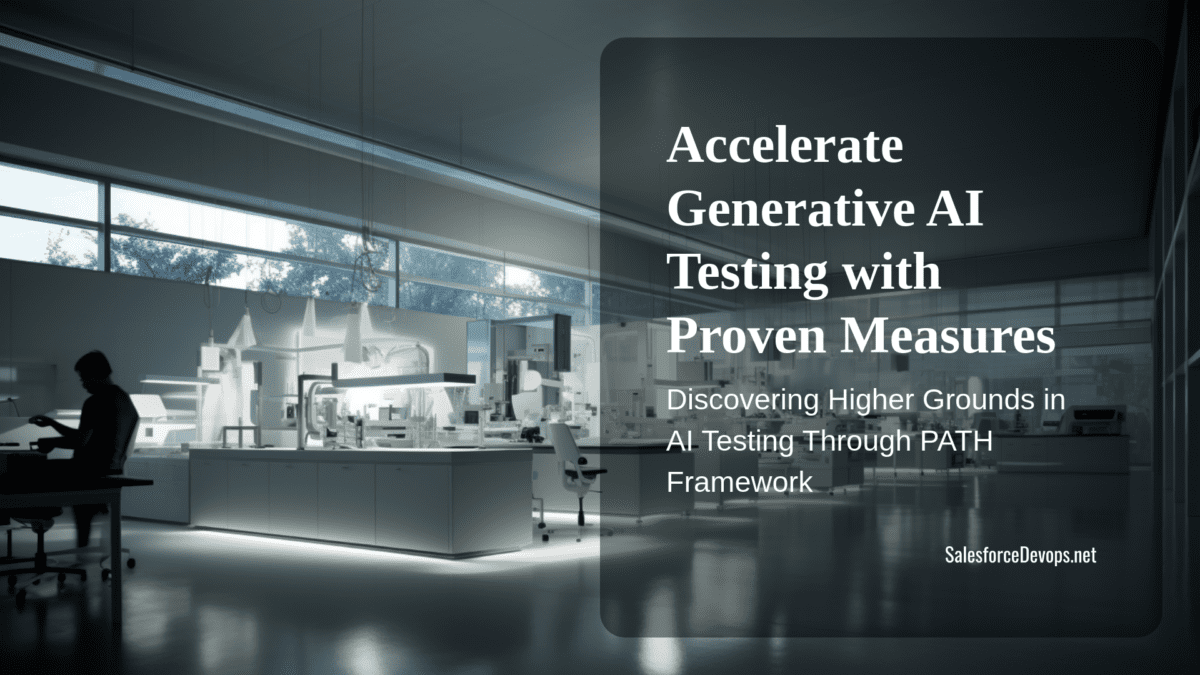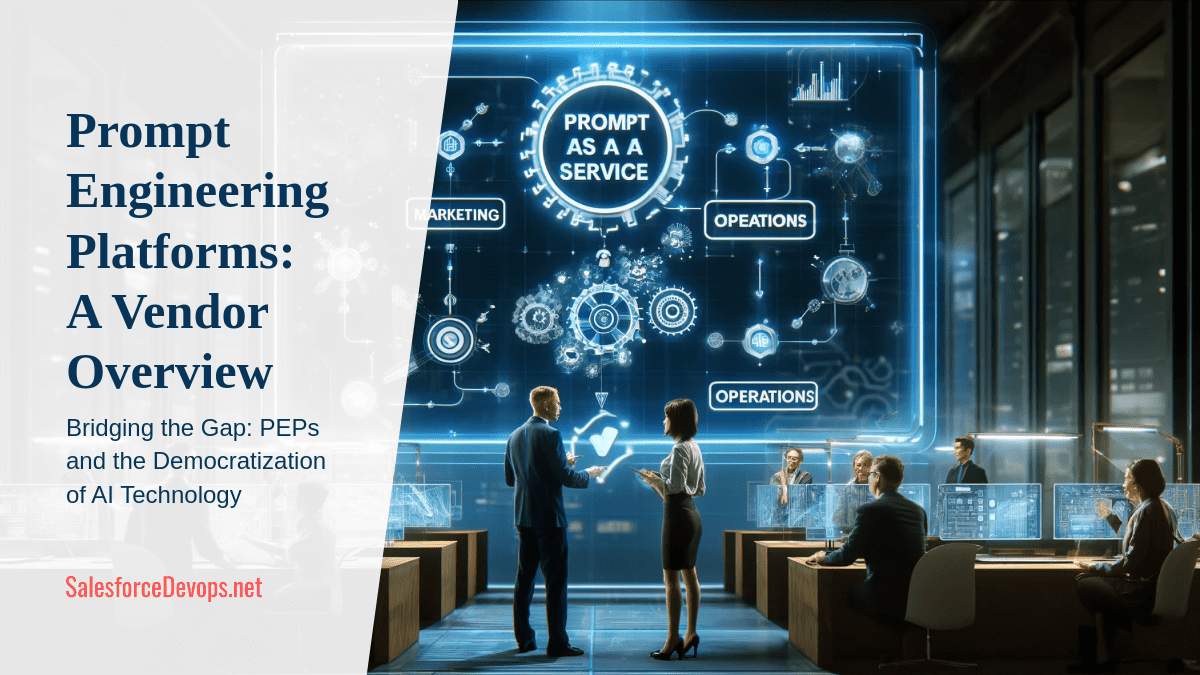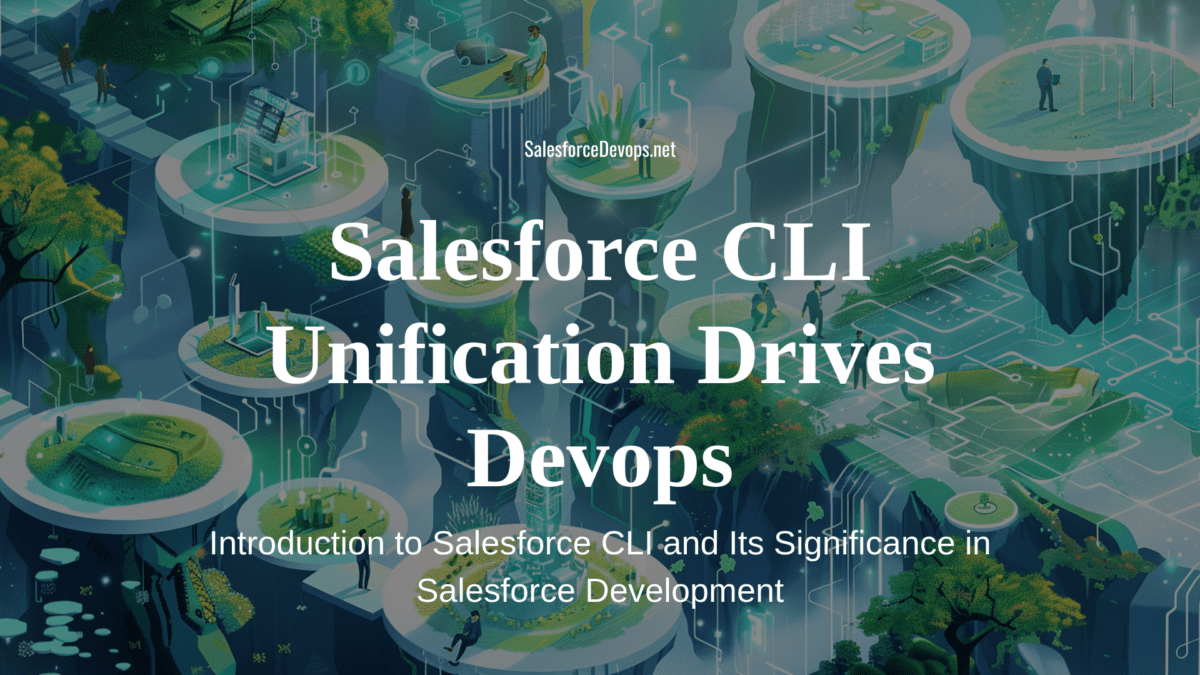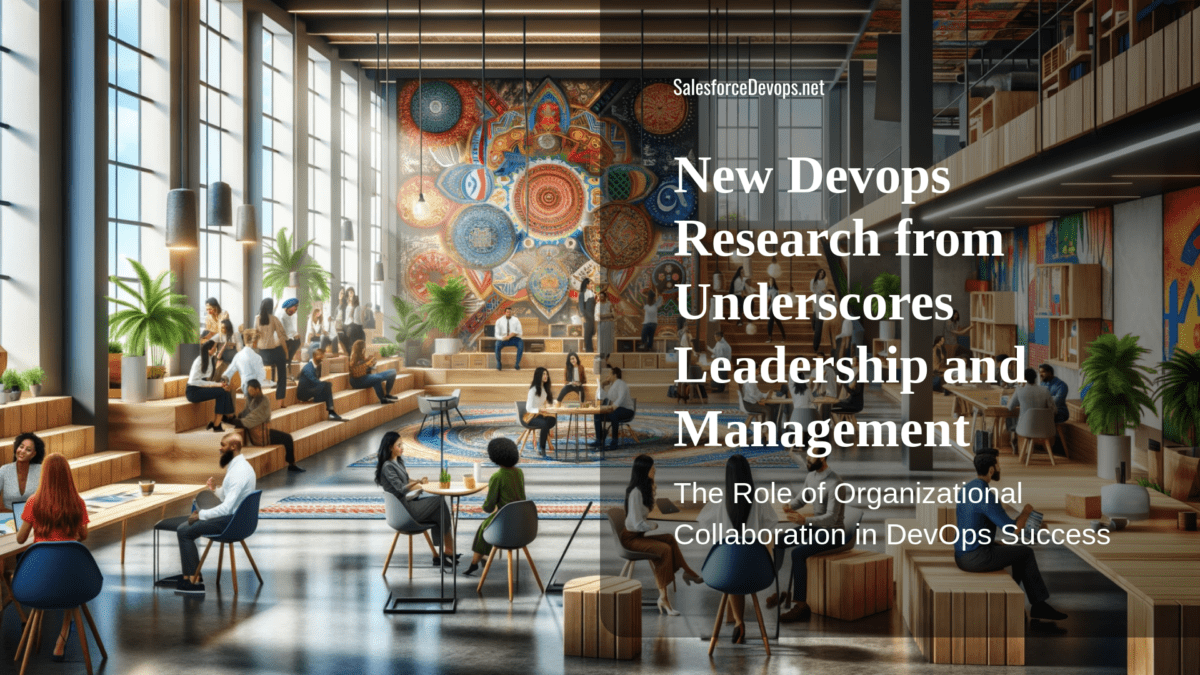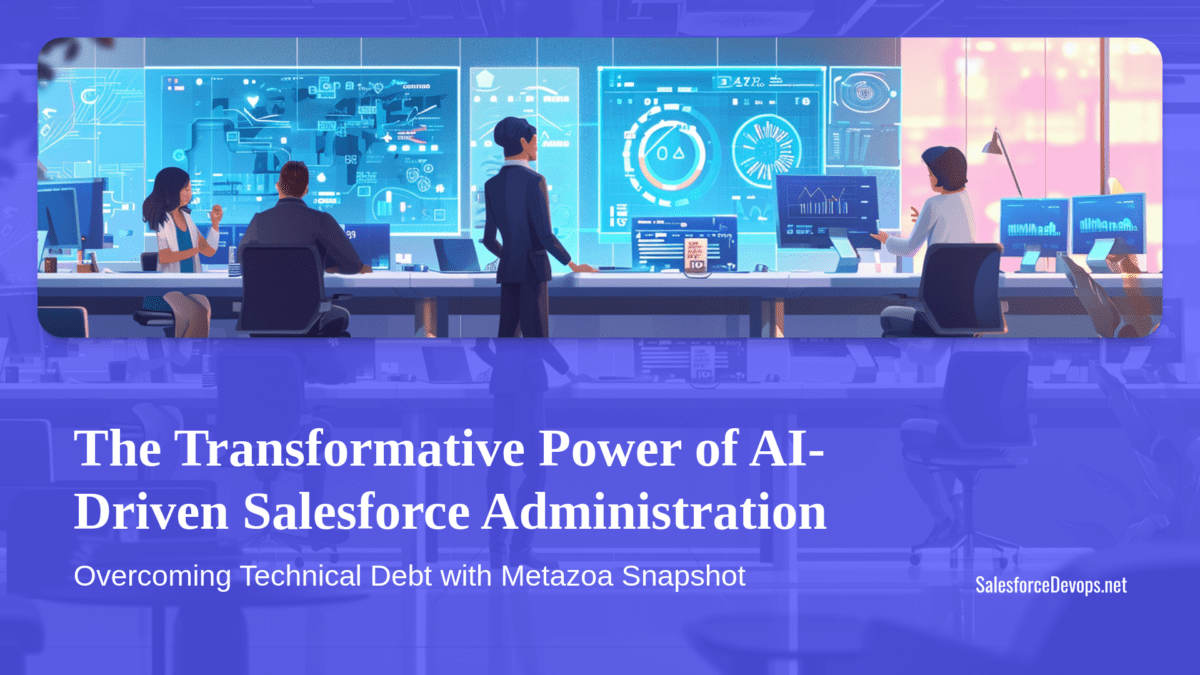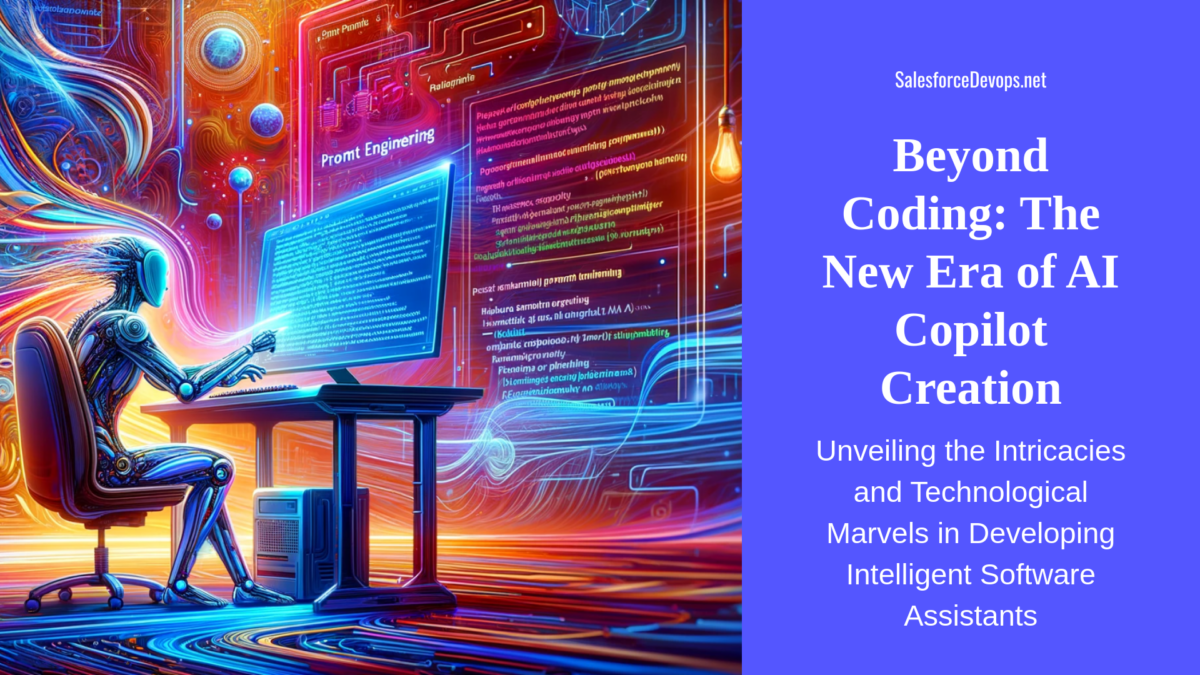Accelerate Generative AI Testing with Proven Measures
Generative Artificial Intelligence (AI) is ushering in an era where machines don’t just think, they create. As the magic of Generative AI unfolds, from creating art to novel designs, ensuring its seamless operation becomes paramount. Now, let us enter the intricate world of Neural Architectures and specialized Frameworks.
Table of contents
Navigating the PATH to Generative AI Testing Mastery
As we delve deeper into the intricacies of Generative AI testing in this article, we’ve charted a clear PATH—Plan, Act, Test, Hone—to guide your understanding and mastery of the topic.
Plan with Neural Architectures
You’ll gain insights into the world of neural architectures. We’ll unravel the significance of choosing the right structure, from convolutional to recurrent networks, and how it forms the foundational step in your Generative AI journey.
Act through Einstein AI
Discover the power of Einstein AI. We’ll discuss the various types of Generative AI to consider, highlighting how each can shape your AI’s performance and the nuances of implementing them effectively.
Test by Integration
Rigorous testing in Generative AI is of paramount imporance. Users must learn about comprehensive integration tests that ensure your architectures and frameworks are harmoniously aligned. And they must and grasp the methodologies to gauge a model’s resilience and adaptability.
Hone the Strategy
Lastly, you’ll understand that Generative AI is an ever-evolving field. We will guide you on how to keep your strategies sharp, embracing continuous feedback and the latest research, ensuring your models remain both cutting-edge and efficient.
By following this PATH in the upcoming sections, you’ll emerge with a comprehensive understanding of Generative AI testing as it pertains to Salesforce, ready to tackle challenges with renewed confidence.
P – Plan with Neural Architectures
Generative AI is akin to a magician pulling a rabbit out of a hat – the awe is real, but so is the method behind the magic. This method’s cornerstone? Neural architectures, the intricate roadmaps guiding the AI to not just process but also create.
Understanding Neural Architectures for Salesforce
Neural architectures define how neural network layers interact and are organized. This acts as the wiring diagram for AI. For Salesforce, this means creating architectures that can understand and optimize CRM data, customer interactions, and workflow automations.
The Generative Stars: GANs & Beyond in Salesforce
Generative Adversarial Networks (GANs) and other architectures like Variational Autoencoders and Recurrent Neural Networks can be tailored for tasks such as customer data analysis, predictive analytics, and automated customer interactions within Salesforce.
Planning for Salesforce Success
Planning with neural architectures in Salesforce involves:
- Objective Definition: Identifying the generative task, whether it’s optimizing customer data, automating workflows, or predictive analytics.
- Architecture Exploration: Understanding which architectures align with your Salesforce objectives, possibly combining elements from various architectures.
- Resource Allocation: Ensuring computational and data resources align with the architecture’s demands within the Salesforce environment.
- Scalability Consideration: Ensuring the architecture can support expanding Salesforce data sets and more complex tasks in the future.
Fortunately, Salesforce has simplified this whole process with the release of Einstein AI, and as a result, made it much less complex to figure out.
A – Act through Einstein AI
With a well-structured neural architecture plan, the subsequent step is to bring it to life within Salesforce, and this is where Einstein AI becomes pivotal. Einstein AI, Salesforce’s comprehensive artificial intelligence for CRM, provides a robust platform to implement, manage, and optimize generative AI models, ensuring they are finely tuned to enhance CRM processes and customer interactions.
Understanding Einstein AI in Action
Einstein AI is not just a framework but a comprehensive AI for CRM, providing tools and capabilities to implement and optimize generative AI models within Salesforce. It allows developers to create intelligent workflows, automate data inputs, and facilitate smarter decision-making by providing predictive insights and recommendations.
Leveraging Einstein AI for Generative Tasks
Einstein AI is good for various generative tasks within Salesforce, such as:
- Predictive Analytics: Utilizing generative models to analyze Salesforce data and predict future trends and customer behaviors.
- Automated Customer Interactions: Implementing chatbots and automated responses that can interact with customers in a personalized and efficient manner.
- Intelligent Workflow Automation: Creating smart workflows that can adapt and respond to changing data and customer interactions within Salesforce.
- Data Management: Utilizing AI to manage and optimize data within Salesforce, ensuring that customer data is accurate, up-to-date, and easily accessible.
Seamless Integration with Salesforce
Einstein AI is inherently integrated with Salesforce. This ensures that generative AI models can interact seamlessly with CRM data and processes. This integration allows for the smooth execution of intelligent workflows, automated customer interactions, and data management processes, ensuring that generative AI models effectively enhance CRM functionality and customer experience. Some of the various ways in which implementing AI could add value are:
- Implementation: Enabling the deployment of generative AI models, ensuring they interact effectively with Salesforce data and processes.
- Intelligent Automation: Facilitating the creation of smart, automated processes that enhance CRM functionality and improve customer experience.
- Data Insights: Providing valuable insights and recommendations based on Salesforce data, enhancing decision-making processes.
- Customer Engagement: Enhancing customer interactions and engagements through intelligent, automated responses and recommendations.
T – Test by Integration
The promise of Generative AI within Salesforce becomes a reality only when the neural architectures are seamlessly integrated and tested. Integration isn’t just about merging these elements; it’s about ensuring they function as a cohesive, optimized unit. That’s where testing by integration steps in.
Understanding Integration Testing
Integration testing in the realm of Generative AI revolves around the principle that individual units, when combined, should operate seamlessly. It’s not just about ensuring that the AI model runs but ensuring that the neural architecture’s logic and the capabilities of the framework harmonize to produce desired generative outputs.
Phases of Integration Testing
- Pre-integration Checks: Before merging, individual components (architecture and framework) are verified separately. This ensures that each one functions optimally in isolation.
- Merging & Initial Testing: The neural architecture is implemented using the framework, followed by preliminary tests to identify any glaring issues or mismatches.
- Comprehensive Integration Tests: Detailed tests are run to simulate real-world generative tasks. It ensures that data flows smoothly through various neural network layers and the framework processes it efficiently.
- Feedback Loops: Insights gathered from testing are fed back into the development process to refine and optimize both the architecture and its implementation in the framework.
Key Considerations for Integration Testing
- Data Consistency: Ensure that data inputs, while passed through an integrated system, maintain their integrity. This ensure data is processed without loss or distortion.
- Performance Benchmarks: The integrated solution should meet or surpass predetermined performance standards. This includes factors like processing speed, generative accuracy, and resource optimization.
- Error Handling: An integral part of testing is to identify how the system handles errors or unexpected inputs. A robust integrated system should have mechanisms to detect, report, and possibly correct these anomalies.
- Scalability Tests: The integration should not just work for the present but should also be scalable for future expansions or increased data loads.
The Role of Continuous Integration (CI)
In modern AI development, Continuous Integration (CI) plays a pivotal role. It involves automated testing every time a change is made to the architecture or its framework implementation. CI ensures that the generative AI model remains robust and efficient, even as it evolves over time.
H – Hone the Strategy
The realm of Generative AI is dynamic and ceaselessly evolving. As with any rapidly advancing technology, staying static is not an option. Just as a blade becomes more effective with sharpening, Generative AI strategies must be constantly refined and honed. This keeps pace with new discoveries, challenges, and opportunities.
Why Hone?
In a fast-paced AI world, yesterday’s cutting-edge solutions can quickly become today’s norm and tomorrow’s obsolete tools. Honing the strategy ensures that the generative models remain relevant, efficient, and aligned with the latest research and best practices.
Steps to Strategy Refinement
- Feedback Analysis: Gather insights from every integration test, user interaction, and model output. Understand where the model excels and where it falls short.
- Research & Development: Stay abreast of the latest in Generative AI. Participate in conferences, workshops, and webinars. Dive into scholarly articles and industry reports. Keeping updated allows for the infusion of new techniques and methodologies into the existing strategy.
- Iterative Optimization: Regularly update and retrain generative models to capture new data patterns and insights. This iterative process ensures that the model’s performance continually improves.
- Stress Testing: Push the model to its limits. See how it performs under extreme conditions or with unexpected inputs. This can reveal weaknesses in the strategy that might not be evident under normal conditions.
- Stakeholder Feedback: Engage with users, clients, and other stakeholders. Their perspectives can provide invaluable insights into how the strategy can be enhanced.
Embracing Change
Honing isn’t just about refining the existing strategy but being open to overhauling it if necessary. As new methodologies emerge, it might be more beneficial to adopt an entirely new approach rather than making incremental changes.
Monitoring Outcomes
As refinements are made, it’s crucial to monitor the outcomes. Use performance metrics, user feedback, and other KPIs to measure the effectiveness of the honed strategy. If desired results aren’t achieved, it’s back to the drawing board for further refinement.
PATH In Action
Let’s take a quick look at a real world scenario and how this approach would help simplify the process.
AcmeCorp, navigating the e-commerce landscape, identifies a need to automate customer service responses within its Salesforce CRM using Generative AI. The objective is crystal clear: develop a generative model that autonomously produces accurate and brand-aligned responses to customer inquiries. The planning phase is succinct yet thorough, with the team selecting a neural architecture that can adeptly comprehend and generate responses, ensuring alignment with diverse customer inquiries and maintaining the company’s brand tone.
Moving to action, AcmeCorp leverages Einstein AI within Salesforce, implementing the chosen neural architecture and training the model with historical customer interaction data. This ensures the model can accurately comprehend and generate responses to various customer inquiries. Einstein AI provides the necessary tools and environment, facilitating the implementation and optimization of the generative model within Salesforce, ensuring it enhances CRM processes and customer interactions effectively.
Testing is streamlined, focusing on ensuring seamless integration and operation of the generative model within Salesforce. The team conducts targeted tests, simulating customer inquiries and evaluating the generated responses for accuracy and coherence. Post-implementation, honing becomes a continuous strategic endeavor, with AcmeCorp utilizing feedback and data from customer interactions to iteratively refine and enhance the generative model, ensuring it consistently provides accurate and helpful responses to customer inquiries.
In Conclusion
The intricate dance of Generative AI is one of perpetual motion, always ebbing and flowing with the tides of innovation and technological advancements. It’s a testament to the adaptability and resilience required in the AI domain.
As we’ve explored, refining and honing strategies isn’t a luxury—it’s an imperative. Staying attuned to feedback, remaining updated on emerging research, embracing iterative optimization, testing rigorously, and being receptive to stakeholder feedback are pillars that uphold an effective Generative AI strategy.
Furthermore, the willingness to embrace change and monitor outcomes ensures that the AI system not only serves current needs but also anticipates future requirements. In the ever-evolving arena of AI, the mantra remains clear: evolve or risk obsolescence.
Have you started a Generative AI project yet? If so, I’d love to hear your feedback and to discuss how things are going, and what approach(es) you took. I’m especially interested in what your test strategy is, or if you have one as of yet. As this is a brand new world, there are bound to be new solutions and ideas every day! You can reach me through email via [email protected] or come say hi on LinkedIn!
